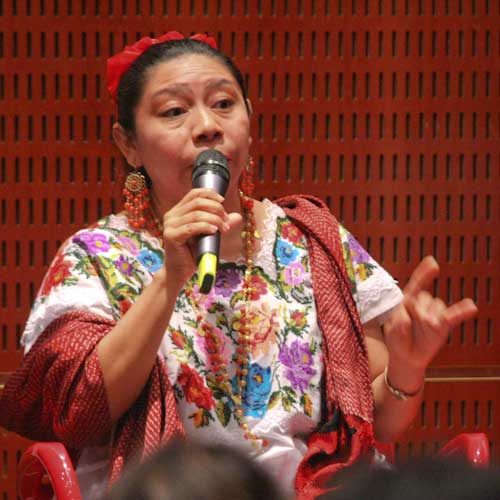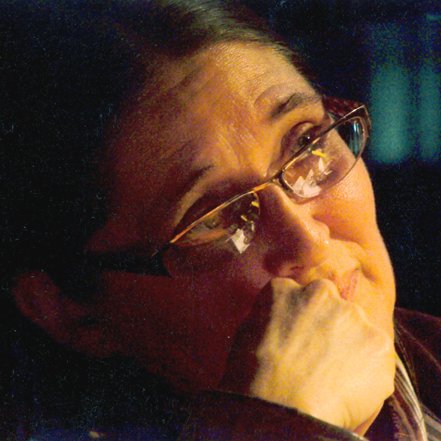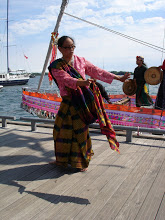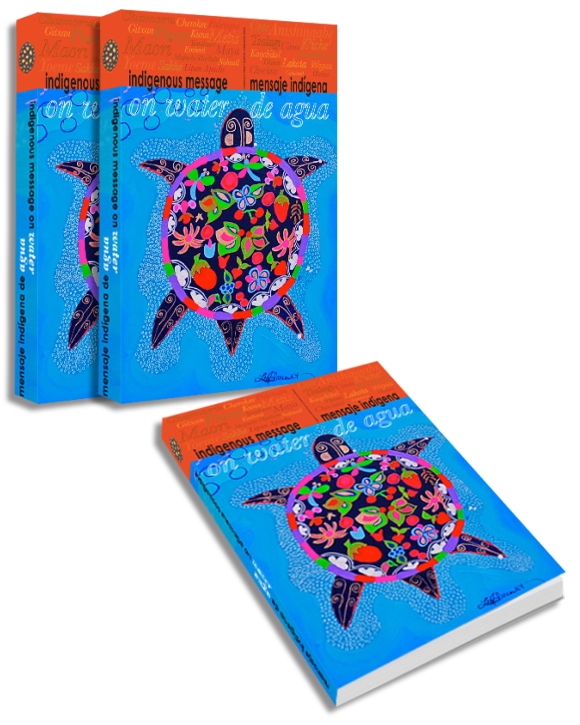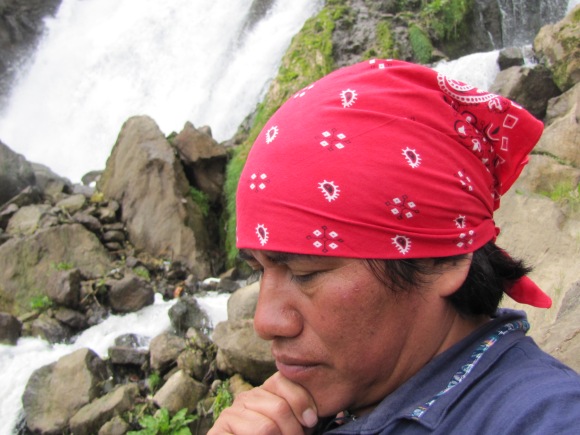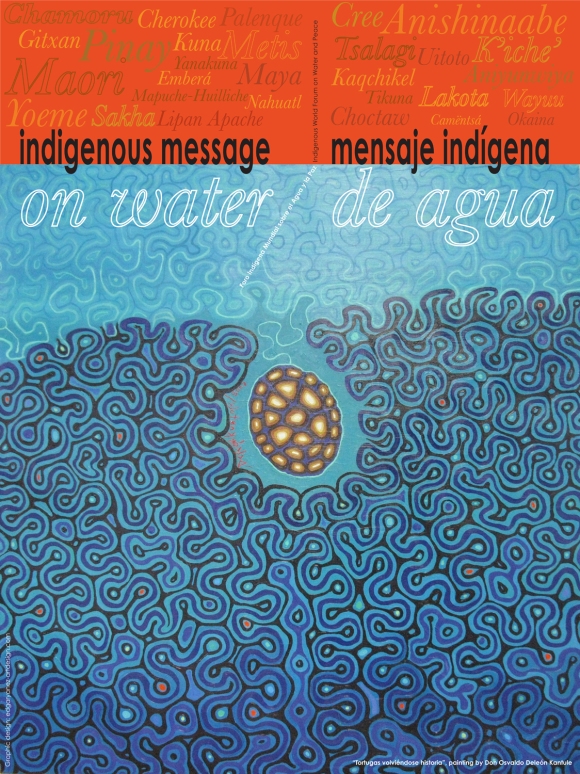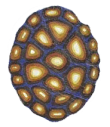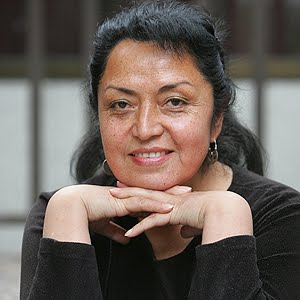This is the last drop of our anthology before we close the campaign and the manuscript starts its own journey toward its readers. This is the last call to obtain the Indigenous Message on Water! We would love to print your name in the book’s acknowledgments page, and send you the compilation in the following months. We just have 6 days to raise as much as we can! Today, we will be waiting for you in our website => http://www.indiegogo.com/projects/indigenous-message-on-water
In this seventh and last sneak-peek, we have prepared a selection of short poetry, which we hope you will enjoy and read aloud facing the Water. Thanks to Briceida Cuevas *, Humberto Ak’abal **, Allison Hedgecoke *** and Jaime Luis Huenún ****!
~~~
Esta es la última gota de nuestra antología antes de que cerremos la campaña, y por fin el manuscrito comience su propia jornada hacia sus lectores. Este es el último llamado para obtener el Mensaje Indígena de Agua! Nos encantaría imprimir sus nombres en la página de agradecimientos de nuestro libro y enviarles la compilación en los próximos meses. Sólo quedan 6 días! Vayan hoy mismo a nuestro sitio
=> http://www.indiegogo.com/projects/indigenous-message-on-water
En esta séptima entrega, hemos preparado una selección de poesía breve que esperamos gocen y que ojalá puedan leer en voz alta y frente al agua. Gracias a Briceida Cuevas*, Humberto Ak’abal**, Allison Hedgecoke*** y Jaime Luis Huenún****!
nación maya, méxico
Briceida was born in the Tepakán settlement, Calkiní municipality, in the State of Campache, on July of 1969. Following her high school education, she went on to study commerce. In 1996 she was awarded a writing fellowship for indigenous writers by the Fondo Nacional para la Cultura y las Artes. Her poetry is featured in various anthologies including: Flor y canto: cinco poetas indígenas del sur (1993), and Mirada con un gallo: Antología de autores contemporáneos en lengua maya (1994). She is the author of two books of poetry: U’yok’ol auat pek’ ti u kuxtal pek’ / El quejido del perro en su existencia (1998), y Je’ bix k’in / Como el sol (1998).
~~~
Nació en el poblado de Tepakán, municipio de Calkiní, estado de Campeche, en julio de 1969. Hizo estudios de comercio después de la secundaria. En 1996 fue becaria del Fondo Nacional para la Cultura y las Artes para Escritores en Lenguas Indígenas. Diversas antologías recogen su poesía, dentro de las que sobresalen: Flor y canto: cinco poetas indígenas del sur (1993), y Mirada con un gallo: Antología de autores contemporáneos en lengua maya (1994). Ha escrito dos poemarios: U’yok’ol auat pek’ ti u kuxtal pek’ / El quejido del perro en su existencia (1998), y Je’ bix k’in / Como el sol (1998).
Wolis t’aan
Ch’e’ene’ ma’ uts tu t’aan a pulik tuunich ti’i’.
Ka ch’amik u ch’e’eneknakil.
Júumpuli’ ma’ uts tu t’aan báaxal beyo’.
wa taak a báaxal tu yéetele’
woliskuunt a t’aane’
ka jalk’esti’,
bin a wil bix ken u ka’a sutil ti’ teech.
Voice Ball
The well doesn’t like you throwing stones into it.
You hurt its stillness.
And it doesn’t like this game at all.
If you want to play with the well,
make a ball out of your voice,
hurl it in,
you’ll see, you’ll get it back.
Pelota de voz
Al pozo no le gusta que le tires piedras.
Lastimas su quietud.
Ese juego no le agrada.
Si quieres jugar con él,
haz de tu voz una pelota,
arrójala,
verás que te la devuelve.
nación k’iche’, momostenango, guatemala
Self-taught, doubly poet (Mayan K’iche’/Spanish) of multiple voices translated into Japanese, Hebrew, Arab, French, Italian, with awards from around the world such as the International Prize of Poetry Blaise Cendrars (Switzerland, 1997), the Continental Prize Canto de América (UNESCO, 1998), the International Prize Pier Paolo Pasolini (Italy, 2004), the Chevalier de l’Ordre des Arts et des Lettres (France, 2005) as well as a Guggenheim Scholarship (2006).
~~~
Autodidacta, poeta doble (maya k’iche’/ castellano), voz múltiple traducida al japonés, hebreo, árabe, inglés, francés, italiano, celta, con reconocimientos por todo el mundo como el Premio Internacional de Poesía Blaise Cendrars (Suiza, 1997), el Premio Continental Canto de América (UNESCO, 1998), el Premio Internacional Pier Paolo Pasolini (Italia, 2004), y el Chevalier de l’Ordre des Arts et des Lettres (Francia, 2005) además de la Beca Guggenheim (2006).
We k’o ja’: k’o k’aslemal;
are we maj…
Chomaja la.
With water: life;without water…
Think about it.
Con agua: vida;
sin agua…
Piénselo.
huron/cherokee/cree/metis
Allison is a poet, writer, performer, editor, and activist. She came of age cropping tobacco and working fields, waters, and working in factories. She has authored books include: Dog Road Woman and Off-Season City Pipe (poetry); Rock Ghost, Willow, Deer, a memoir; and Blood Run, a verse-play. Allison has edited eight additional collections, including: Sing: Poetry of the Indigenous Americas, Effigies, and the soon to be released Effigies II. She has been awarded fellowships/residencies with Lannan Foundation, Weymouth Center for the Arts, Kimmel Harding Nelson Center, Hawthornden Castle, MacDowell Colony, Great Plains Center, and her honors include an American Book Award, two endowed chairs, and several literary and arts grants.
~~~
Allison es poeta, escritora, artista de performance, editora, y activista. Creció cultivando tabaco, y trabajando en el campo, en el agua, y en fábricas. Es autora de los siguientes libros: Dog Road Woman y Off-Season City Pipe poesía; su autobiografía Rock Ghost, Willow, Deer, autobiografía; y Blood Run, una obra de teatro en verso. Ha editado ocho colecciones adicionales, incluyendo: Sing: Poetry of the Indigenous Americas (2011), Effigies, y la próxima Effigies II. Ha sido becaria de residencias con la Fundación Lannan, Weymouth Center for the Arts, Kimmel Harding Nelson Center, Hawthornden Castle, MacDowell Colony, Great Plains Center, y sus honores incluyen un premio American Book Award, dos cátedras,y varias becas literarias y artísticas.
Takhšiyi
We’re called to cup water
carry it carefully cradle
within bare hands or ladle
wood to pour resplendence
from ama who makes us
human, holds us here in
memory brings us back
into ourselves each time
we enter dipping seven
times until we become
who we need be.
Takhšiyi
Se nos ha llamado a cuidar del agua
cargarla con esmero acunarla
en las manos desnudas o con un cucharón
de madera verter su resplandor
de ama, la que nos hace
humanos, la que nos mantiene aquí
en la memoria y nos regresa
hacia nosotros mismos cada vez que
entramos sumergiéndonos siete
veces hasta que por fin logramos ser
quien necesitamos.
nación mapuche-huilliche, chile
Jaime was born in Valdivia, in the Ríos region (Chile) in 1967. He has published the following books of poetry: Ceremonias (1999) and Trakl Port (2005). In 2003 he received the Pablo Neruda Prize and in 2005 he was awarded a Guggenheim Scholarship. In his work, he does not only build intertextual dialogues between indigenous and Latin American writers, but also with voices such as that of Georg Trakl. These poems are part of his book Reducciones (2013).
~~~
Jaime nace en Valdivia, región de los Ríos (Chile) en el año 1967. Ha publicado los libros de poesía Ceremonias (1999) y Puerto Trakl (2001). En el año 2003 se le otorgó el Premio Pablo Neruda, y en el 2005 obtuvo la Beca Guggenheim. Su obra es singular en cuanto establece diálogos intertextuales no sólo con poetas indígenas y latinoamericanos, sino con voces como la de Georg Trakl. Estos poemas hacen parte de su último libro, Reducciones, pronto a publicar.
Wirilkan kiñe nawel
kiñe witrunkomew
tachi amule chi ko
ñi ingkañpewam.
I have drawn a tiger
on the stream
so the water free
will defend itself.
Un tigre he dibujado
en el arroyo
para que el agua libre
se defienda.
~~~
Rag ñi lewfü,
pillmakeñ lewfü,
pu wangülen ñi lewfü
füta willi mapu mew.
River of Clay
River of Swallows
Astral River
in the Deep Land of the South.
Río de la Greda,
Río Golondrina,
Río de los astros
en la Gran Tierra del Sur.

